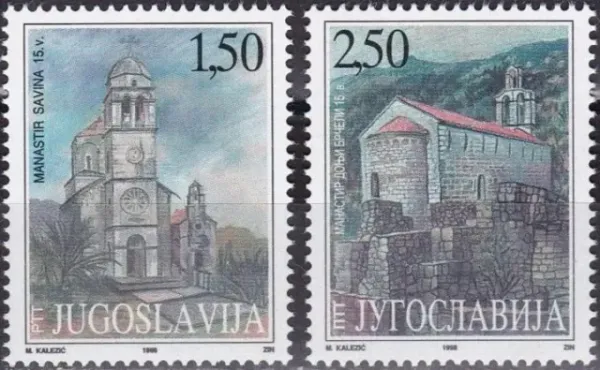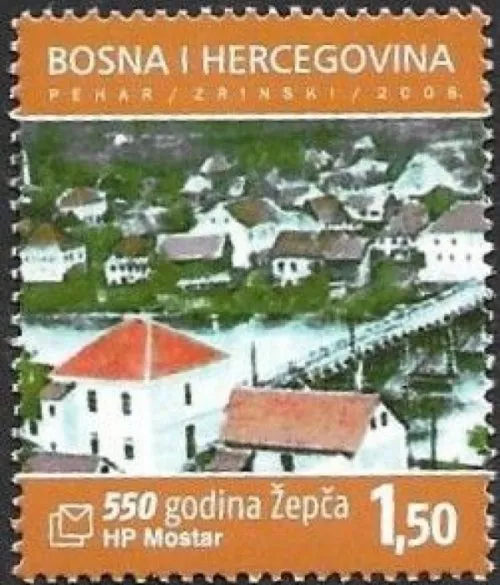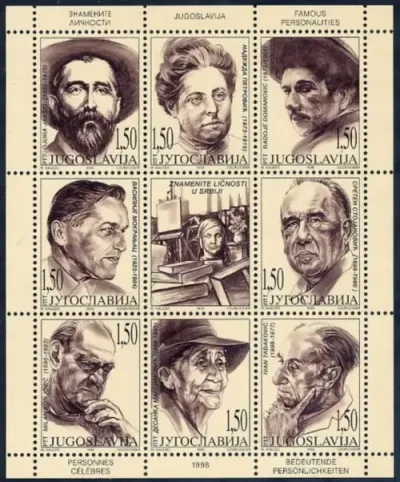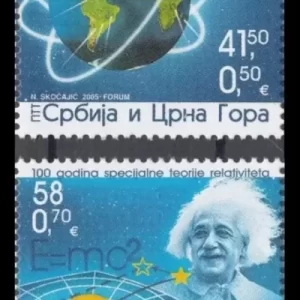Yugoslavia postage stamps year 1998 Monasteries in Montenegro MNH**
Montenegro is home to several significant monasteries, each steeped in history and cultural heritage. These sacred sites are not only places of worship but also important historical landmarks that attract numerous visitors and pilgrims. Here are some of the most notable monasteries in Montenegro:
Ostrog Monastery
- Location: Near Nikšić, perched almost 900 meters above the Zeta Valley, carved into a cliff face.
- History: Founded in the 17th century by Saint Basil of Ostrog, it is one of the most important pilgrimage sites for Orthodox Christians and attracts up to a million visitors annually.
- Features: The monastery consists of two parts: the Lower Monastery (Donji manastir) and the Upper Monastery (Gornji manastir). The latter houses the relics of Saint Basil, and visitors often report miraculous experiences associated with their prayers here. The site includes several churches, including the Church of the Presentation and the Church of St. Stanko the Martyr, adorned with vivid frescoes.
Morača Monastery
- Location: Situated near the Morača River in central Montenegro.
- History: Built in 1252 by Stefan Vukanović, it showcases Rascian architectural style.
- Features: The monastery is renowned for its stunning frescoes from the 13th century that depict biblical scenes with remarkable detail. It serves as a serene retreat for those seeking peace and reflection.
Cetinje Monastery
- Location: In Cetinje, Montenegro’s historical capital.
- History: Originally constructed in 1484 by Prince Ivan Crnojević, it has been a symbol of Montenegrin spirituality and independence.
- Features: The monastery houses important relics, including the right hand of Saint John the Baptist and a fragment of the True Cross. Its historical significance is profound, as it has played a central role in Montenegrin culture and religion.
Savina Monastery
- Location: Near Herceg Novi on the Adriatic coast.
- History: Established in the 18th century, it features three hillside churches.
- Features: Known for its beautiful frescoes and religious treasures, including a silver icon. The site is accessible and offers a tranquil atmosphere for visitors.
Podmaine Monastery
- Location: Near Budva.
- History: A rustic 15th-century monastery set on a lush hillside.
- Features: Famous for its vibrant interior frescoes, it provides a peaceful environment for contemplation.
Reževići Monastery
- Location: Between Budva and Petrovac along the Adriatic coast.
- History: Though its exact founding date is uncertain, it is believed to date back to the 13th or 14th century.
- Features: This serene site offers stunning views of the sea and is ideal for reflection.
These monasteries reflect Montenegro’s rich spiritual heritage and architectural beauty, making them essential stops for anyone interested in exploring the country’s history and culture. Each site offers unique experiences, from breathtaking views to profound spiritual connections.









